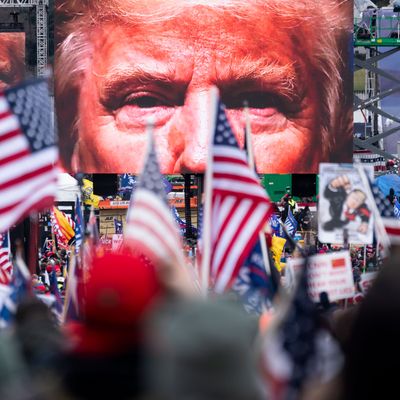
Two weeks ago, President Trump began promoting a rally in Washington, D.C., to protest Congress’s final certification of the 2020 election. “Big protest in D.C. on January 6th,” he tweeted, “Be there, will be wild!” At the rally, he instructed his supporters to march to the Capitol and stop the proceedings. “And after this, we’re going to walk down there, and I’ll be there with you, we’re going to walk down … to the Capitol and we are going to cheer on our brave senators and congressmen and women,” Trump promised. “And we’re probably not going to be cheering so much for some of them. Because you’ll never take back our country with weakness. You have to show strength and you have to be strong.”
On the Senate floor, Senator James Lankford, a Republican, was in the middle of a speech supporting Trump’s position and opposing certification of the election when he was suddenly halted. The Senate was evacuated because pro-Trump protesters had broken into the Capitol.
It can be a little unfair, a little too easy, to blame people who decry a problem when some others take up their cause violently. But violence was just what Trump promised. While Trump, characteristically, declined to march alongside his followers — this is a man, after all, who rides in a golf cart and calls it “exercise” — he got the riot he wanted.
Violence is what he has been promising all along, wafting the scent of blood into the air to goad his supporters. Trump believes that he and his supporters are entitled to threaten and attack journalists and any other people who resist them. When Republican member of Congress Greg Gianforte body-slammed the reporter Ben Jacobs for asking about his stance on Trump’s health care plan, Trump praised him for his toughness.
Later that year, when another reporter asked the president about his atmosphere of threats, Trump growled that violence was a deserved response to critical news coverage. “You know what, you’re creating violence by your question. You are creating. You,” Trump warned. “The fake news is creating violence … I’ll tell you what, if the media would write correctly and write accurately and write fairly, you’d have a lot less violence in the country.”
He has been lamenting the supposed passivity of his supporters and fantasizing openly about the day when their pent-up urges could be unleashed. “I actually think that the people on the right are tougher, but they don’t play it tougher, okay” he said in 2019, “I can tell you I have the support of the police, the support of the military, the support of the Bikers for Trump – I have the tough people, but they don’t play it tough — until they go to a certain point, and then it would be very bad, very bad.” When armed protesters stormed the Michigan State Capitol and shut down its proceedings, Trump praised their conviction. The state was a laboratory of autocracy, a testing ground for a method Trump was ready to bring to Washington.
Thought precedes action. Trump has never accepted the legitimacy of political and legal restraints on his power. He has failed to overturn the election because he is inept — not because he actually accepts the public’s right to elect his opponent. Accordingly, he delegitimized the election and persuaded his supporters that it was stolen.
A large coterie of Trump loyalists have endorsed his lies about the election — though, as the lies grew progressively sillier, and as courts dismissed them, the ranks of Trump’s outright supporters has slowly shrunk. On the opposite side, a tiny band of Republican critics has openly contradicted his fantasies and stated clearly that Joe Biden won.
The great middle part of the party has fallen in between. They have calculated that they must tolerate Trump’s lies, because opposing Trump would threaten their own ability to win his devotees in the future. “What is the downside of humoring him?,” a Republican official confessed in November.
The result of this tactic was utterly predictable. By declining to brand Trump a liar, Republicans ensured that their voters would give credence to his claims. This morning, Ted Cruz anchored his demand to delay the election’s certification by citing a poll that 39 percent of the country believed the election had been rigged. First they spread his lies, then argued that the lies must be respected because they had spread.
Trump’s primary appeal to the party base all along has been his image as a “fighter.” The term has always been a euphemism. Its understood meaning is that Trump is less inhibited than normal politicians, and his willingness to employ ruthless, unethical, or illegal methods will allow him to win where other Republicans have lost.
This is one quality on which nobody has ever been confused. Trump promised all along to refuse to accept an election in which he was declared a loser and to employ any means at his disposal to maintain power. First, Republicans entrusted him with the power of the presidency. Then he used that power to persuade his supporters that the election had been stolen and that only extraordinary action could allow democracy to prevail.
Trump’s response to his defeat has been ineffectual and flailing, but it has followed a certain strategic logic. He has used every method at his disposal to negate an election he clearly lost. He filed scores of lawsuits. He pressured lawmakers and state officials to cancel the outcome, and he lobbied his vice-president to throw the election into the House of Representatives. When all these measures failed, he sent in a mob to shut down Congress.
Trump fairly reveled in the attack, praising his supporters, and depicting their actions as the inevitable response to the imagined theft of his election:
The president is an insurrectionist. Those who cooperated in giving him power cannot say they weren’t warned.
This post has been updated.






























